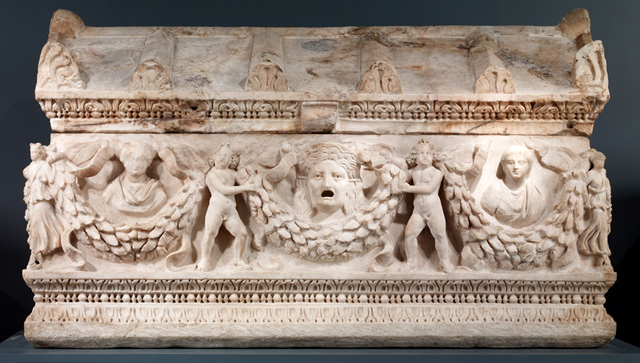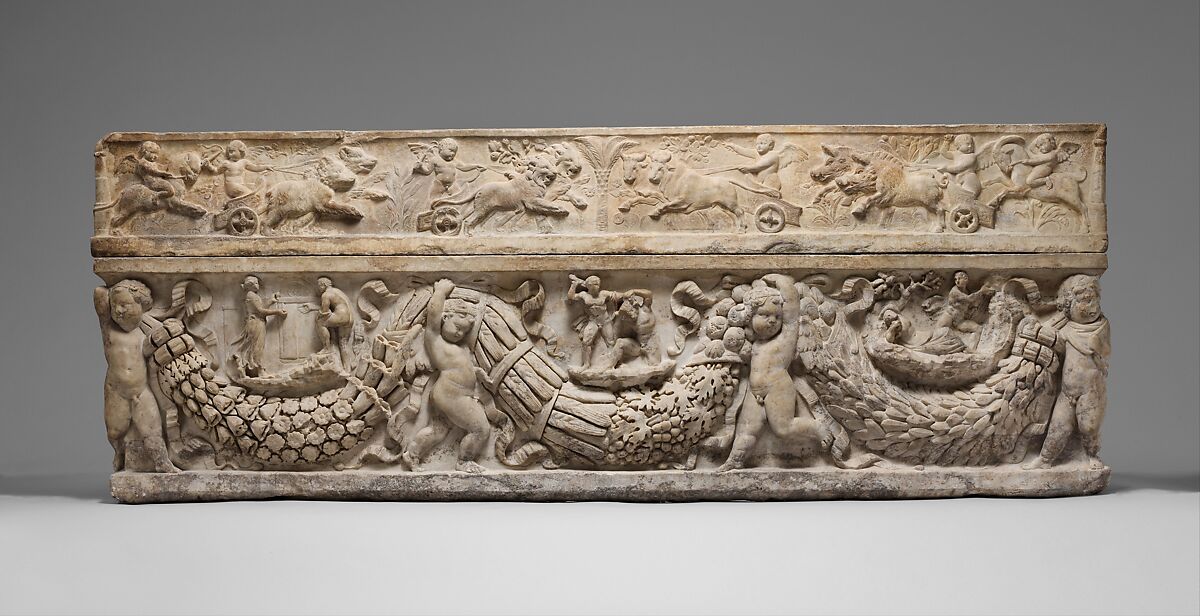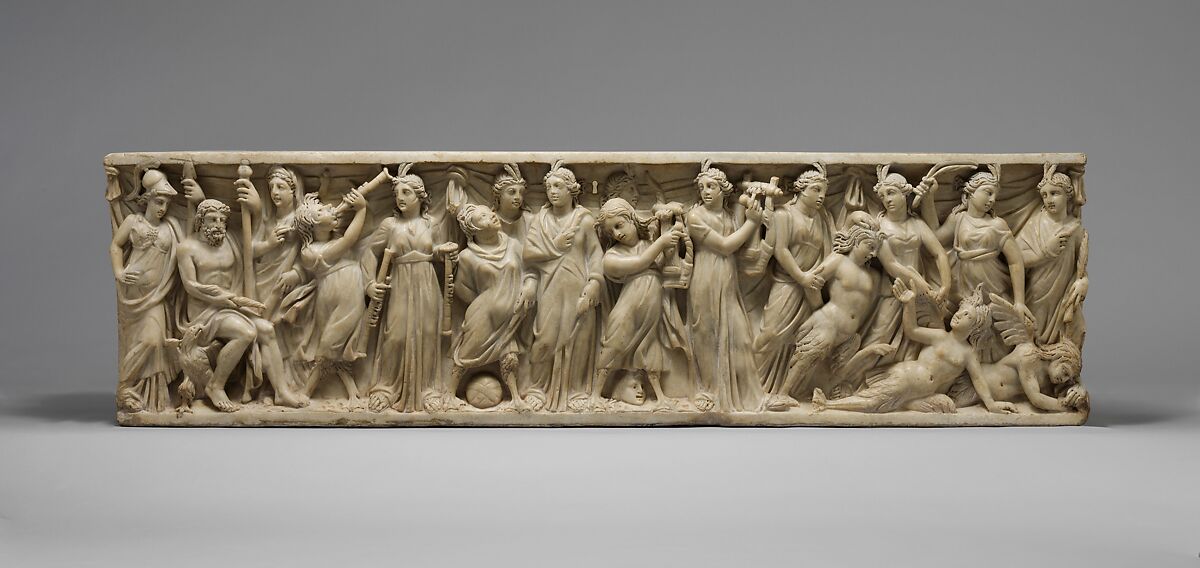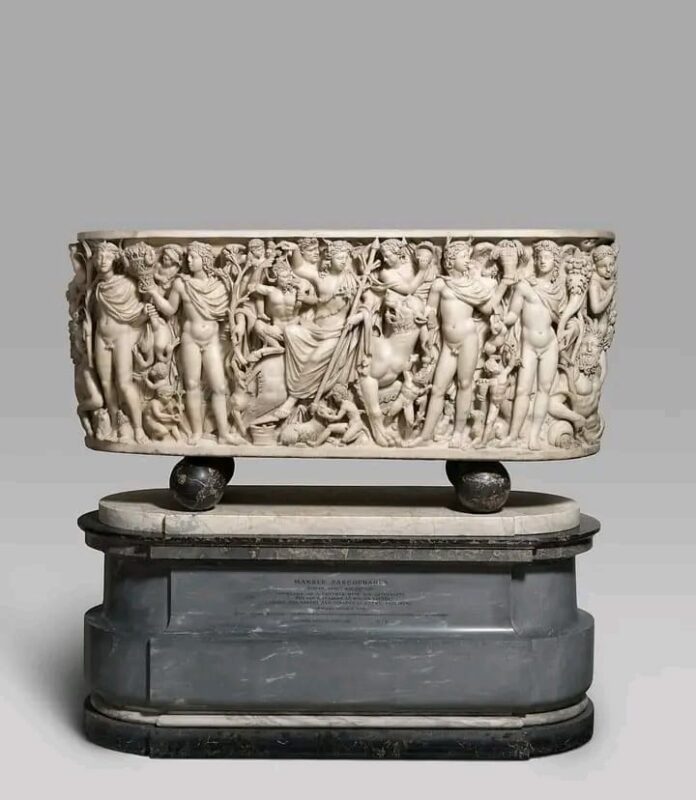The Roman marble sarcophagus featuring the Triumph of Dionysos and the Seasons, dating back to 260–270 AD and discovered in Rome, Italy, stands as a masterpiece of ancient artistry and mythological symbolism. This highly ornate sarcophagus is remarkably well-preserved, showcasing intricate carvings that narrate a rich mythological tale.

At its center, the dominant figure is Dionysos, the Greek god of wine and revelry, depicted seated majestically upon a panther. Despite his central position, Dionysos is somewhat overshadowed by four towering figures surrounding him, representing the four Seasons. Unlike traditional portrayals of the Seasons as female figures, here they are depicted as robust youths. From left to right, these figures personify Winter, Spring, Summer, and Fall, each adorned with attributes symbolizing their respective seasons.
Surrounding these central figures are various Bacchic and cultic symbols, intricately carved at a smaller scale, adding depth and detail to the narrative. The composition extends to the rounded ends of the sarcophagus, where two additional groups of figures are depicted amidst lesser beings.

On the left end, Mother Earth reclines gracefully, accompanied by a satyr and a youth carrying fruits, embodying fertility and abundance. On the right end, a bearded male figure, likely representing a river-god, reclines accompanied by two winged youths, possibly signifying additional aspects of the seasonal cycle.
The craftsmanship of the sarcophagus exemplifies the Roman artistic tradition, blending mythological themes with naturalistic elements to create a narrative that transcends mere burial art. The choice to depict the Seasons as youths rather than traditional female forms suggests a unique interpretation of seasonal symbolism within the context of Dionysian worship and funerary rites.

Discovered in Rome, a city steeped in both classical heritage and cosmopolitan influences, this sarcophagus not only serves as a testament to the artistic skill of its creators but also offers a glimpse into the cultural and religious beliefs of its time. It stands as a testament to the enduring fascination with mythology and the eternal cycle of life and death in ancient Roman society.
In conclusion, the Roman marble sarcophagus with the Triumph of Dionysos and the Seasons is not merely a burial artifact but a profound artistic statement that continues to captivate and inspire awe, preserving the legacy of ancient Roman culture for generations to come.




